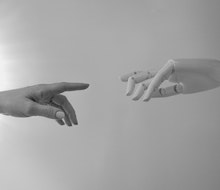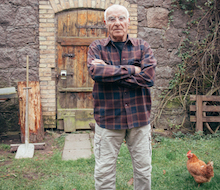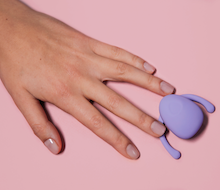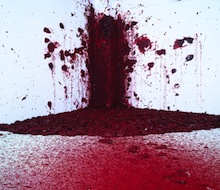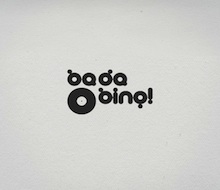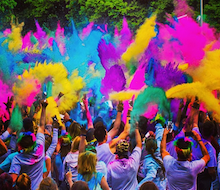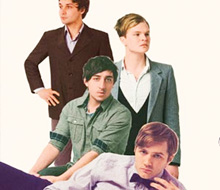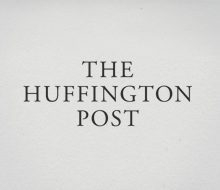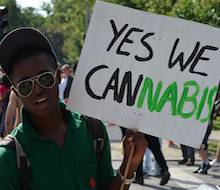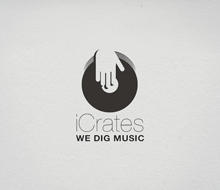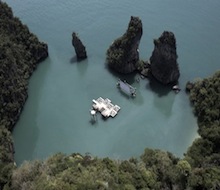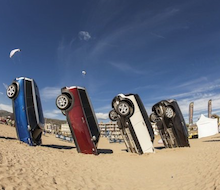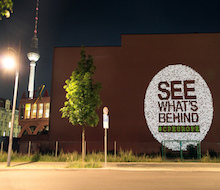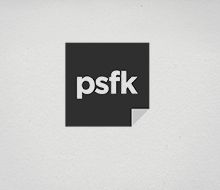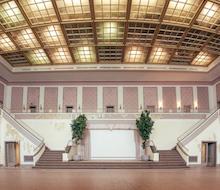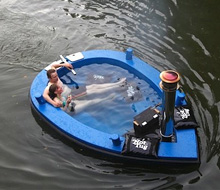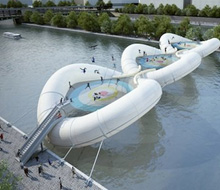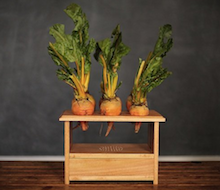In PSFK’s Fashion Debrief, we spoke to Sefleuria founder and data scientist Jessica Graves about how the key to a sustainable future for the fashion industry is for humans and AI to work in tandem, not head-to-head
When it comes to fashion these days, there is no such thing as a brand blind dating a consumer. Going in cold turkey without first stalking their insta profile? I don’t think so. In fact, brands today go so far as employing undercover spies in the form of data tracking technology to do their dirty work for them, wiretapping the lives of their consumer down to a tee, recording their every move, click, swipe and transaction. All of this so when date night is finally upon them, they can make a dazzling impression, catering to their every need and having so much in common that the customer goes from casually dating to being “in a relationship” with the brand.
While designers and trend forecasters are cautious that this new Casanova on the block (by the name of Big Data) will steal their thunder, according to Sefleuria’s founder and data scientist Jessica Graves, it’s important that these traditional creative oracles of the industry work in tandem with this new generation of technology. After all, people like to know that there was a human element involved in the design of a garment that they will adorn.
In PSFK’s Fashion Debrief, we spoke to Jessica about how the future of fashion is not going to be a human or AI situation, but rather an and—what she calls “human-in-the-loop AI”. AI is going to make tools acceptable and powerful for as many designers as possible so they can figure out what it is that consumers want.
PSFK: How would you describe today’s fashion landscape in terms of the biggest ideas and shifts that are taking place?
Jessica Graves: I would definitely say that the fashion industry is, to some extent, waste-embodied. I’m not sure how much longer we can continue throwing non-renewable natural resources at this industry. For environmental and financial reasons, and because consumers are so much more demanding, we’re finally starting to change. We’re finally at a point where people are really starting to get serious about AI and machine learning and starting to figure out how can apply this to fashion.
For example, one of the most exciting things now is that we can start manufacturing fashion in a more automated way, which means we have less waste problems. We have labor problems. We have been producing too much stuff because we have inaccurate estimates about how much stuff we need. We have bad marketing for not reaching people with the products that we have. A lot of these questions, from my perspective, are going to be answered somewhat with data, but also with what AI and deep learning is doing by being able to produce fashion with less people. That’s super exciting to me.
You’ve said in a past interview that “fashion needs datafication that clearly benefits fashion.” What do you see as the role of data in fashion design, and what are the biggest opportunities that could potentially be tapped into?
Making better guesses about how much of something should exist. Fashion’s always going to be a creative process. There’s always going to be, to some extent, a brand leader creating something or a creative director being a demigod of defining culture for us. However, to some extent, data’s going to be really important for establishing depth—if I produce this thing, how much should I produce?
It’s going to be great for proposing new designs, too. Stitch Fix is a great example of this, because they’ve trained AI to look at the market and then add and subtract things that should exist. There’s also Thread Genius in New York that is experimenting with using data to make search better. Not only can you search with a picture and then discover everything that matches in that picture, but you can say, “Here’s a T-shirt” or “Here’s a silhouette,” and “green”, and then get the green version of that shirt.
We’re getting to a point where you can get really specific with search and AI’s starting to understand what it’s seeing. I think the role in fashion’s going to be to parse through all the different options we have, and then help people make better guesses about how deep they should go with their inventory. Then, once they get to the marketing part, helping to finding the target market, not by typing in “18 to 25, making 150K, living in East End of London” but saying, “Hey AI, go find everybody who likes pictures like this.”
Essentially, getting a little better at the marketing, targeting and personalization. Really seeing everything as data, not just numbers or attributes of products, but behaviors and images. That’s starting to get more sophisticated.
When you just said how it can tap into personalization, could you speak more to the potential for this data to be used in a more personalized scale?
People have such a heavy footprint when they’re browsing the web. Right now, it’s used in such boring ways. One thing that’s going to be really interesting is that algorithms can now make good decisions without knowing that much personal information about the user. It seems like an oxymoron to talk about personalization that’s not personal, but now AI can look at not just, “Hey, I know physical things about this person” or “I know things that maybe somebody’s born into” but instead “I know attributes about them, but I don’t need to know this person. I don’t need to know their name. I don’t need to know their zip code. I can tell by how they’re behaving that they’re really going to like this.”
Now we can design recommender systems where instead of saying, “Oh, you like these black pants. Let me show you 10 more black pants,” you can say, “Oh, you like black pants. Let me show you a white shirt and black heels.” Instead of going with just the brand attributes, now AI can pick up on what context the user is browsing in. This user can be completely anonymous and you don’t need to have all their data. You just need to know what they’re doing.
That’s incredibly interesting to me—the idea that not all the data needs to be collected, and put it in a warehouse. How do we delete the data once we’re done with it? What can we do without storing data? What can we do without having user profiles that’s now become a vulnerability for big retailers that are hacked left and right?
Fashion designers have always had a leadership role within the fashion industry. What is your view on fashion trends being dictated by big data, as opposed to a designer’s vision? What do you see as the cultural challenges with datafication in such a creative industry?
It’s funny, because I actually see data as being a creative tool. It’s not an oracle. It doesn’t have any secrets. It can’t tell you anything that it’s never measured before. It can’t tell you anything it’s never seen before. It can combine things really well, and maybe propose something, but as I said, it’s not a creative oracle. Rather, I see data as a tool you can use as a creative. It enables designers who are designing in that top-down way more powerful than ever as they can make better controls and experiments.
I don’t know if the cult of a single designer being the center of power will still exist, but at the end of the day, people still like to be told by other people what they should like and what they should do. They really reward personal referrals. Micro-influencers are trending more than ever today, and we might even go back to big influencers again. It really depends on the context. But ultimately, people still like to know that a human approved whatever’s happening to them.
Stitch Fix is having such amazing success at the moment. However, one thing that people downplay about them is that they could have completely automated their system. Instead they have thousands of stylists, possibly because they found that people prefer to have a human being tell them what they should wear. Even if all the recommendations from a robot were completely on-the-mark, I bet people would like it less because they knew it was automatic.
The thing that’s going to be really interesting is what we call human-in-the-loop AI which will make these tools acceptable and powerful for as many designers as possible, and also making manufacturing cheaper and more automated.
We’re still always going to have creators. But the advent of AI allows things to be much more customized, because we can now figure out what it is that people want. Simply put, I see data and AI making room for more creatives to emerge and have even bigger spheres of influence.
So it won’t be an ‘either/or’. It will be an ‘and’?
It has to be, because AI can’t define culture for you. It can tell a story, make a story more empowering, make good music or simulate a pop star, but it can’t do cultural references. AI can eventually learn how to make things aesthetically pleasing, but it’s not possible for it to understand cultural references.There’s not a lot of structured data for how to go from X event, to I released this thing based on X event. It’s referencing this culture or this celebrity. That’s always going to be a tricky area.
These days, reactive fabrics can adjust in real time to respond to wearers’ internal and external conditions, optimizing their performance or their situational needs. What are some examples that you are seeing of this trend where fashion can be unrestrictedly optimized? For example, through a wearer’s changing environment or their circumstances.
I think we’re going to start to see fashion become more collaborative with wearer behavior. For example, telling you what you’re doing wrong. Doing it with amazing algorithms. Doing that for every body type. Doing that in a really seamless way that is cheap enough for people to actually buy.
There’s all these little hacks that are not in clothes right now, but should be. For example, a piece that goes on your back that will vibrate if your spine is out of alignment. What if that was in every clothing tag? It could also vibrate to remind you to drink water.
Or what if you had a pocket in your jacket that made your phone go off, or made your phone not receive any new notifications? Nothing could reach your phone if you put it in this pocket. You could be like, “This is my date pocket” or “I’m spending time with my kids right now”—to make sure we spend time with the people in our lives without always being connected. Because the less connected the clothing is, the better. The more it promotes us to not connect all the time with the Internet, the better. It’s going to be interesting to see if super connected clothing will make people more vulnerable to being hacked.
What are your thoughts on how stores are enabling one-to-one customization as a core component in clothing purchasing?
Customization is interesting, because you have to design things in a way that makes people feel like it’s accessible and not too much of a burden. I was recently corrected by someone who said, “Don’t confuse customization with bespoke,” because bespoke has always been there and is always going to be there. The problem is that it’s super expensive because it’s difficult to make it cheaply. Bespoke because it implies that somebody’s creating something from scratch.
Customization, on the other hand, is what we’ve seen Mon Purse inside of Selfridges and other stores, where you can go in and change the different colors, straps or handles on your bag, and get one sent to you instead of picking up the regular color that’s in-store. You can even get it monogrammed.
We’ve seen it with Away luggage starting to diversify by adding stickers or monograms. Technologically, we are seeing better printing software. Not even necessarily 3D printing, but better inkjet and digital printing. That can happen on the spot. I’ve seen that in Colette in Paris a couple months ago, where people can actually get something printed out and customized.
What really interests me is how knitwear is getting produced per size [at Ministry of Supply]. Size customization is going to be the next big thing, because almost nobody who’s an emerging brand produces sizes that actually fit a North American body. At the moment, it’s pretty much limited to knitwear.
Louis Vuitton has lasers that will cut stuff out before their artisans cut it out, so that it uses the best part of the leather. We need to start to think about bringing that technology in stores.
The other big thing happening in the industry right now is tailoring. For example, you could be a member of a High Street store, and you could buy online from them every single month, but then when you go into the physical store, they have no idea who you are. They don’t have anything you want. They don’t carry the right sizes for you. They don’t know what else is inventory. Before we’re even at the level of, “Hey, make something for me on the spot,” we need to get the data connected so that people understand where items are in their own companies.
Inventory and moving stuff between stores is still a huge problem. If everyone had a perfect RFID solution and actually knew their consumers and their inventory, we could already personalize things by saying, “Hey, here’s your outfits for the week. Come in. We already know you. We’ve got your whole profile.”
We’re not even at that point. I always worry that retailers will just start throwing 3D printers into their stores. But it’s like, “lf you just paid a little bit more attention to your data, you could already personalize your products for people from the beginning, rather than getting it wrong and having to create stuff from scratch in-store”
There’s still a huge gap. Retailers need to be looking at what they don’t know about their inventory and where are their black holes, because they could already make it feel super personal.
Looking beyond the four walls of the in-store experience, what are some examples of how fashion companies today are empowering their wearers to adjust their clothes or their accessories based on their own personal needs that they encounter daily?
The tech that’s really interesting to me is microbes that have fused spider genes into them. [laughs] They can create silks and control how they want that silk to behave and look, and what else they want it to be mixed with. One company [Bolt Threads] produced a tie and Stella McCartney started sponsoring them.
I’m really liking what Levi’s is doing with innovation when it comes to how they’re bringing things to scale. There’s Evrnu, which is doing crazy things with recycling cotton. To me, the super interesting tech is chemical more than digital.
There’s so many bodies in the world that are not created for. We need to get used to the idea that we should create things that are infinitely customizable per size and stop worrying about, “I produced this size run. It stops here. It’s too expensive to make this shape.” When you can start making those tweaks really cheaply, that is the best reason to have some kind of manufacturing item in your stores. Size and fit are such big missed opportunities.
What do you think that the global fashion industry will look like a decade from now?
In 10 years, people will be completely obsessed with renewable materials. It’s going to become a reality. How can we create new materials from old? How can we create the same materials in a less expensive and resource-intensive way?
We have so much waste—not to sound like a hippie. We’re going to run out of stuff. We’re going to run out of people. We can’t keep producing the volumes we produce. We throw stuff out so fast. There’s no infrastructure for recycling items. There’s none. Garbage sits in landfills.
It’ll be totally normal to have the record of the garment’s life over blockchain. I’ve seen a couple startups who are trying to figure out how we can make the supply chain more transparent using blockchain, and how do we can ship things around much more efficiently.
Fashion will really be looking inward at how do we produce new and different things from all this waste we create. Microbes are going to be the theme. Various companies are already doing it, but in the future, more and more companies will try to patent microbe strains to eat all the plastic in the ocean and put it into sneakers. Adidas and Nike are totally going to be at the forefront of this.
We’re going to need to start thinking about how do we produce the same quality we used to produce with renewed materials. It won’t be pretty anymore. It’ll be necessary. This is a necessity.
How do you think that the fashion consumer of today has changed the most in terms of what makes them tick and what are they seeking in a fashion product?
The consumer’s changing so fast. Before they were super obsessed with, “Whatever the top brands say I should do I’m going to do, so I’ll either buy that or I’ll buy a knock-off.” Then we had a period of the consumer being more obsessed with the product than the brand. A lot of people think we’re still in that phase. We’re kind of still in that phase, where the consumer’s like, “I just want a white shirt. I’m going to open a hundred tabs with all white shirts, and pick the cheapest one and buy it.”
However, I think where we’re really at now is that the consumer’s like, “I want to buy an identity. I want to buy into the story. I don’t care where the shirt is. I care where it was made.”
Consumers today expect to have choices. They expect things to be instantaneous.We’re still at the point where they’re not necessarily going to pay more to have products be more sustainable, but they will pay more if they like the brand. That’s still where people are struggling, wondering, “Should go green or should we go diverse?”
Consumers are really sensitive to authentic brand stories because they see ads nonstop all day. To survive as a brand, you have to either make your ads interesting or culturally relevant, or produce products that wrap into the story to make it interesting.
Read more about the themes in this interview in PSFK’s Fashion Debrief.




